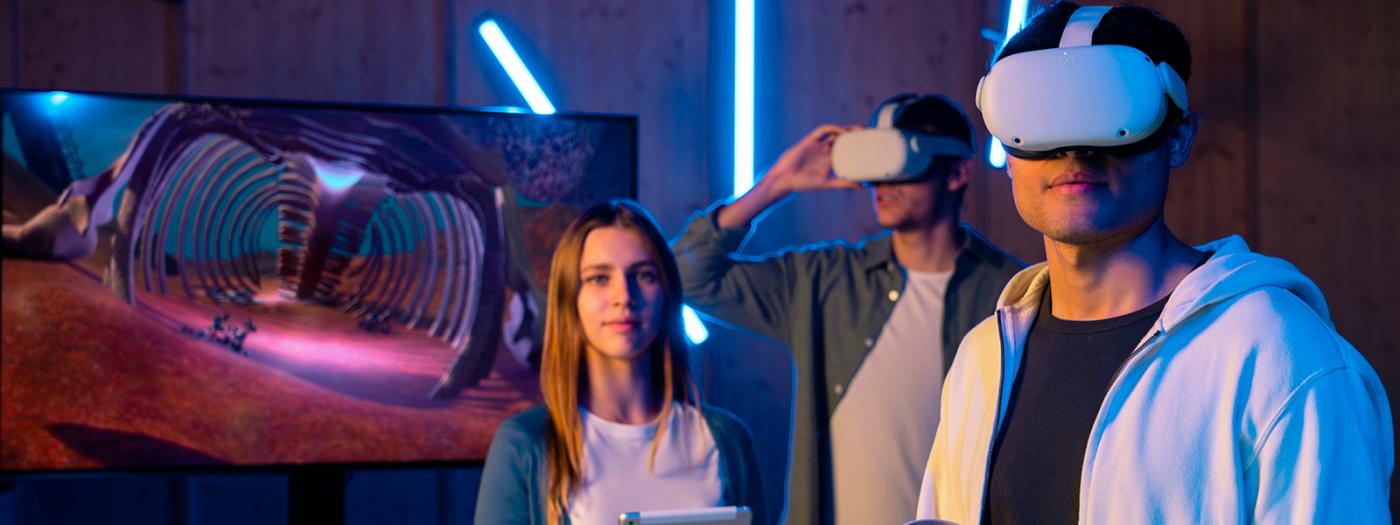Digital Photography
During this course the student will receive enough knowledge to be able, together with a team, to create and disseminate a particular idea from an audiovisual. Therefore, the student must know how to work in a team and know and acquire the roles of an audiovisual production.
Producció Audiovisual Curs 2021-2022
Audiovisual Production 2021-2022 Academic year
Producción Audiovisual Curs 2021-2022
The competencies associated with this subject are:
CG9. Have the ability to work in an interdisciplinary team.
CE1. Conceive and write scripts.
CE3. Digital audio, video and video production and editing.
CE8. Use body capacity in production processes (body expression)
The Learning Outcomes of this subject are:
LO.01 The necessary photographic knowledge is available to capture any type of photograph
LO.02 Know the existing software tools for modeling, animating, setting, and rendering objects and geometries in 3D.
LO.03 Know how to write the scripts for an audiovisual production.
LO.04 Know how to structure and plan production in a shoot.
LO.05 Knowledge is provided to be able to find relevant information that has not been done in class.
Roles in an audiovisual production
The Technical Script and the shooting order
Use of the material in an Audiovisual Production
Assembly and Composition
D1. Theoretical classes
During the first part of the theoretical classes the teacher will explain a series of concepts through examples (in the format of images and videos). Students must know how to implement the concepts in a real project. During the course, 22 hours will be dedicated to this methodology, all in person)
D2. Problem classes and exercises
During the course, 8 exercises will be proposed that the students will have to carry out in order to deepen the knowledge that is being given. Of these 8 exercises, the first two will be done in groups and the remaining 6 will be done individually. This methodology is assigned a load of 6 contact hours and 22 non-contact hours.
D3. Seminars
One of the class sessions will be given by a documentary director. The aim is for the student to understand the job market that revolves around audiovisual production as well as how to work in the professional world.
D4. Tutoring
During the different group practices that take place on campus, the teacher will be monitoring the classes to validate the correct learning of the students. This tutorial has a load of 6 face-to-face hours while the student carries out the different activities.
D5. Laboratory practices
To better understand the concepts of lighting, students will need to use the Medialab lab where they will experiment with different types of lighting sources, as well as properly lighting with Croma.
D6. Project Based Learning
In order to be able to put into practice all the concepts learned, the student will have to create, in a group, an audiovisual project where he will learn the realization of a certain role.
SA1. Exams
The subject has two theoretical-practical exams. The first is done during the checkpoint and assesses the theoretical knowledge of the student as well as his mastery of a video editing program, while the second (which is done at the end of the course) assesses the mastery of a video composition program.
SA2. Exercises, problems and practices
During the course the student will have a series of exercises (8 in total) to better understand the theoretical concepts taught in class.
SA3. Project
In parallel to the face-to-face classes and exercises, students will have to carry out an audiovisual project with the same group of practices. This project is free and has a dedication of 32 hours per student. For this reason, it is worth 30% of the final grade of the subject.
SA4. Self-evaluation
To finalize the final grade of the project, the members of each group will evaluate the work done by each role.
SA5. Oral presentations
All projects will be screened on the last day of class. Before each project, students will have to make an oral presentation explaining that it has not been carried out.
SA6. Class participation
The practical classes are weekly and iterative. This means that each group will do internships every 15 days. The week that a group does not have to do the exercise will have to help a group that if it touches it in the way that the group deems appropriate: Acting, observing ...
SA7. Portfolio
At the end of the course the student must submit a Portfolio made with the official template where he explains how the final project has been completed.
Qualification required to pass
In order to pass the subject, SA1, SA2, SA3 and SA7 must have a grade equal to or higher than 5 in all the parts that make them up. The SA4, SA5 and SA6 do not need to be passed, although if they are not delivered, the final grade will be penalized by 20%.
Aumont, J., & Marie, M. (1990). Análisis del film. Barcelona: Ediciones Paidós Ibérica, S.A.
Desilets, A. (1973). Técnica Fotográfica. Madrid: Daimon.
Fernández Díez, F., & Martínez Abadía, J. (1999). Manual básico de lenguaje y narrativa audiovisual. Barcelona: Ediciones Paidós Ibérica, S.A.
Nieto, F. R. (2017). El arte de la composición. J De J - FotoRuta.
